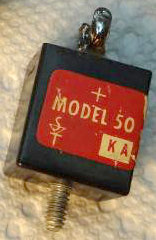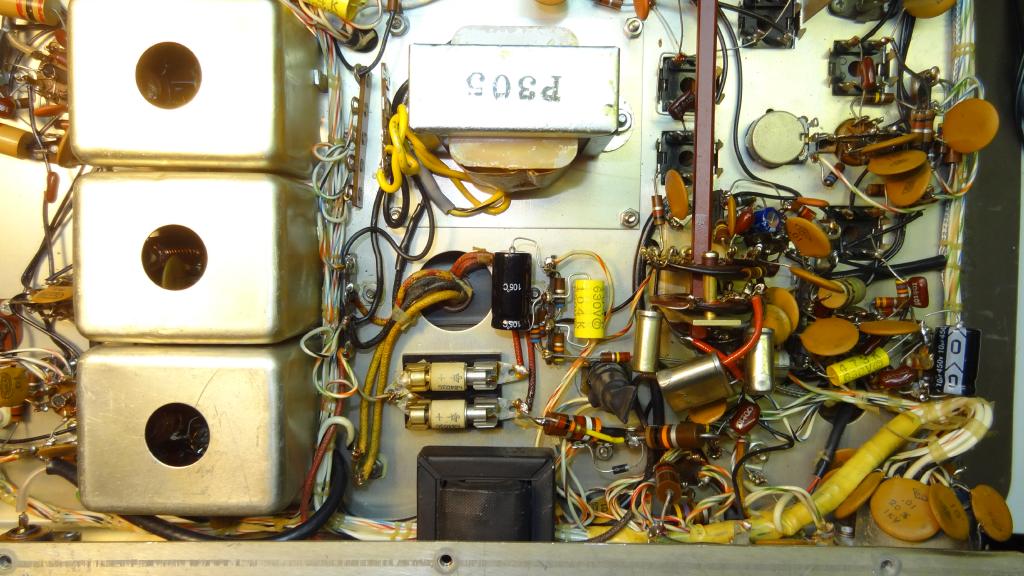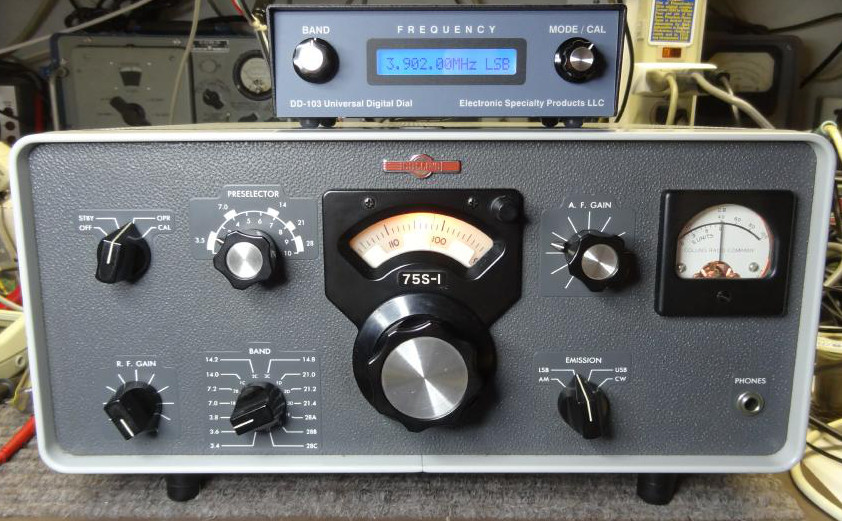
Collins Restoration Notes from WA3DSP
Updates to the Collins 75S1 Receiver
If you have seen my 516F-2 modernization updates then you are aware of my concern with line voltage and older vacuum tube equipment. My line voltage runs consistently high, often in the 124 volt range and sometimes more. The Collins 75S1 was designed for a nominal 115 volt 60 hz. AC input but even with this voltage applied with a variac B+ voltages were slighly high. My fix was to install a 12.6 volt 2 amp. center tapped filament transformer on the blank plate at the center of the receiver. If you already have an accessory installed there then it would be possible to find another location or make up an external box between the receiver and AC line.
 Removed selenium rectifier
Removed selenium rectifierThe goal is to bring B+ voltages in line with Collins specifications. You should also replace the selenium bias rectifier with a diode rectifier (1N4007) and check that the bias voltage is correct. The 75S1 was designed around using negative bias on many of the stages. The audio output tube has its cathode directly grounded and without the proper negative bias at the control grid this tube would draw excessive current and fail prematurely. The original bias rectifier in my 75S1 gave about -54 volts at it filtered output and the new diode gave about 12 volts more, right around the normal voltage. You want around -10 volts on the control grid of V8. Excessive line voltage also raises filament voltage by the same percentage. A 10% high line voltage would result in 6.9 volts on the filaments increasing the heat and decreasing the life of the tube.
I used the entire 12.6 volt winding in a buck arrangement in my receiver. This gave me 115 volts or less at the 75S1 transformer most of the time and resulted in voltages that were very close to specification. With the center tapped transformer you would have the choice of 0, 6, or 12 volts of buck or if needed boost in line voltage. The final results were a much cooler operating and hopefully more reliable receiver well into the future.
 75S1 bottom view of buck transformer modification. Selenium rectifier was replaced with a three terminal strip.
75S1 bottom view of buck transformer modification. Selenium rectifier was replaced with a three terminal strip. Top view showing two transformer mounting screws through the blank accessory plate.
Top view showing two transformer mounting screws through the blank accessory plate. View of 75S1 in operation with Electronic Specialty Products model DD-103 digital readout
View of 75S1 in operation with Electronic Specialty Products model DD-103 digital readoutLinks to other WA3DSP Sites
© 2012 WA3DSP